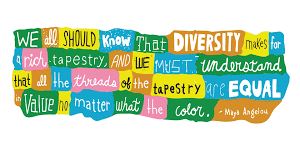Thresholds, in the literal sense of the word, are strips of wood, metal, or stone forming the bottom of a doorway and crossed in entering a house or room. Threshold can also refer to the magnitude or intensity that must be exceeded for a certain reaction, phenomenon, result, or condition to occur or be manifested. These are all accurate representations of the word threshold, but thinking in a more abstract way, thresholds can be much more valuable in this sense than when seen materially. Thresholds are an invitation to a transformation, whether that be spiritually, emotionally, mentally or even physically.
The idea of being on a threshold of sorts when looking at different beginnings and finales that occur throughout my life as a living, breathing human being is so bizarre and fascinating to me. At this point in my life, I am taking steps forward and leaving things behind as I continue to grow intellectually and emotionally through my college journey. Opening my mind and thinking about entering this course as an equivalent of crossing over a threshold I made a short list of other things that are thresholds for me right now. I am at a threshold with all three of my English courses this semester, it is my last semester of my senior year at Geneseo, I am going to be transitioning from being an undergraduate student at college to being a full-time teacher AND graduate student by the end of this year, and I have just recently finished my journey of student teaching and have successfully made the transition back to being the student in the classroom and not the teacher! There are so many events that could be considered thresholds, and “when one door closes, another one opens!”
There are many ideas that I have been actively thinkING about recently in regard to what I am most excited about for this course. I mentioned before that I have never read works by Morrison or Dante and I am super excited to get to make connections between the two. I like that a lot of this course involves collaboration, and I am hoping that we will be involved in more discussions that lead to “aha moments.” An example of an “aha moment” in a collaborative setting is exactly what happened in class today. We were all discussing the importance of numbers in both Morrison and Dante’s writing. When we were realizing just how repetitive the use of the number three is in both works and everyone in the class was astonished! Being able to share these moments of realization and appreciation for an author’s creation is something that I am really looking forward to doing more. I have already loved so many aspects and perspectives brought about in the literature we have read so far and I cannot wait to continue on this adventure as the semester progresses. Morrison’s craft and care embedded in “Beloved” thus far has really brought me in and made me want to explore more. Morrison’s characters are flawed and fragile and human. These characters have feelings, desires, hopes, fears, pasts, presents and futures that are known just like it is impossible to look ahead fifty years and see exactly where we will be and what we will be doing in that exact moment in time. When Sethe talks about Sweet Home in the very beginning of the novel, she wonders if hell is a pretty place (Morrison 7). This was amusing and shocking to me because Sethe now knows that Sweet Home was not a good place, but it was pretty and first impressions are usually what guides what we do next. Sethe has the same thought process that living, breathing people in her place would have and it allows readers to put themselves in her position while watching her story unfold.
Another quote that I noted in the text was when Sethe met Amy and sobbed when Amy massaged her swollen feet. Amy said “Anything dead coming back to life hurts,” and I remembered this quote when Beloved came through the water and was sick for the next several days. Beloved dealt with pain in her lungs the most (from the water) and even after she felt better she speaks in a raspy voice. I thought back to what Amy said about the dead coming back to life and how much pain can be involved in that journey. Beloved is thought to be Sethe’s deceased child that has come back to Earth to be with them and their family, and the idea of her being once dead and now alive and sick at first directly correlates to what Amy was saying about Sethe’s swollen feet.
Watching all of the characters in this novel develop and cross thresholds of their own made me stop and reflect on what thresholds I have crossed and will cross as I continue to grow as a person. Morrison’s characters have real-life feelings during events that act as starting points and closings throughout their story, and this is something I think a lot of us can connect to, as we are taking on explorations of our own and feeling similar ways. I have come to the realization of how many doorways I have walked through to get where I am today. Anything can be a threshold: beginnings, endings and everything in between.



